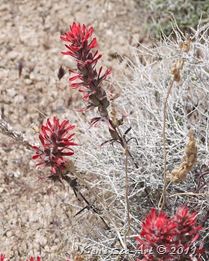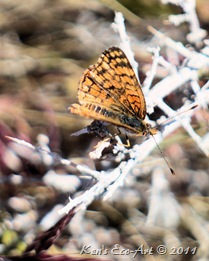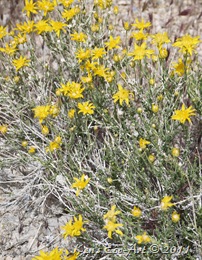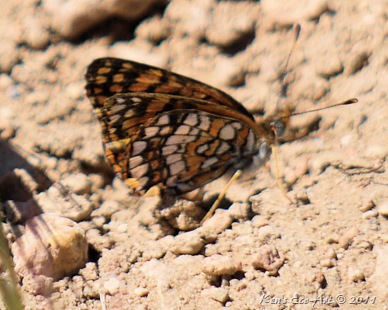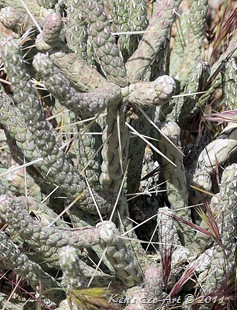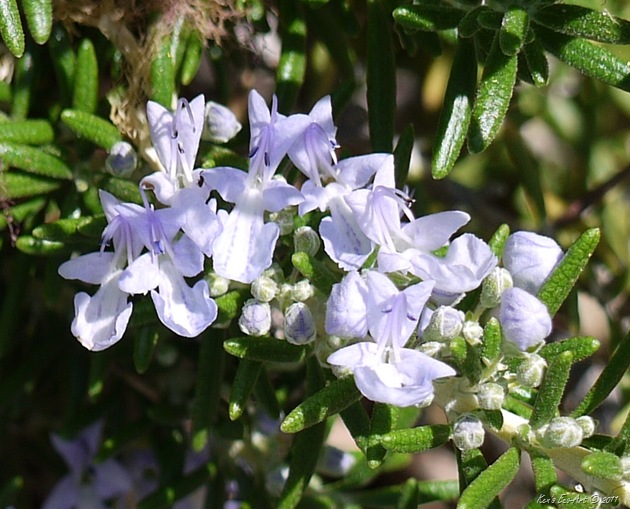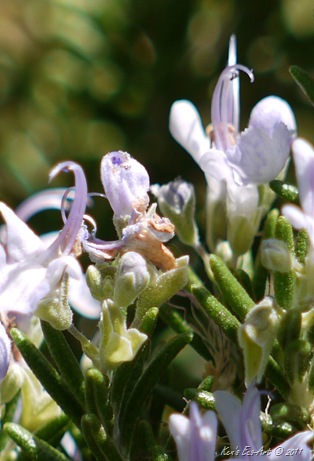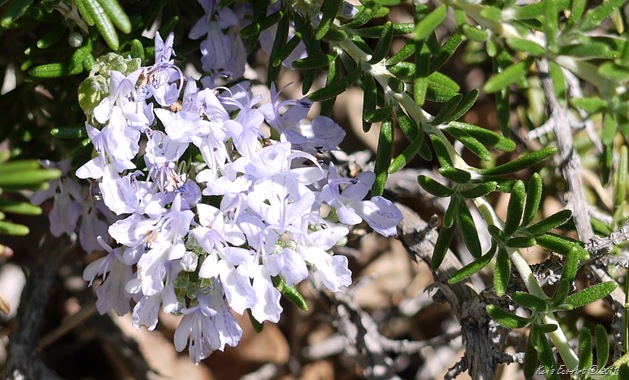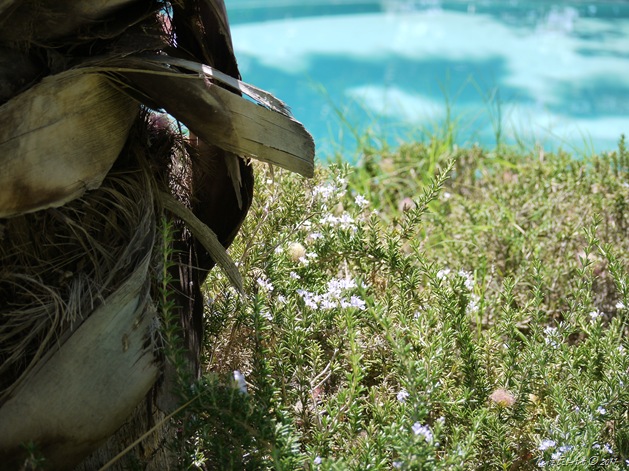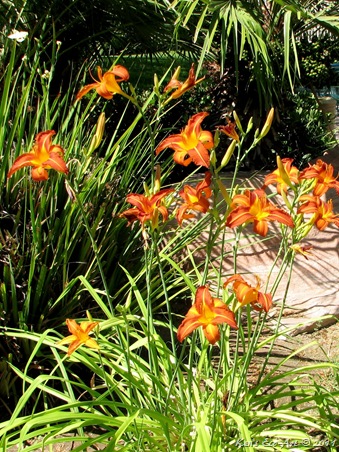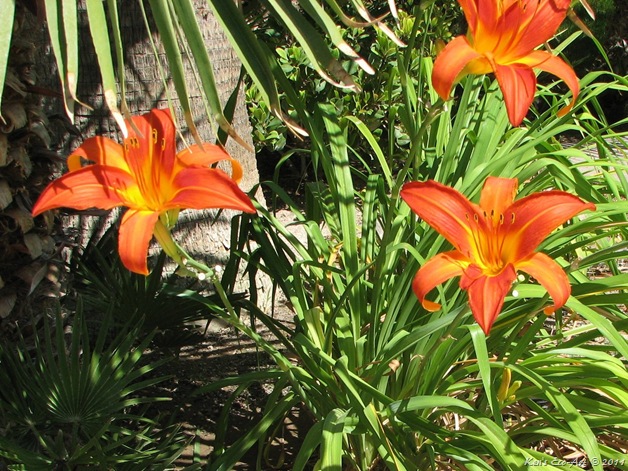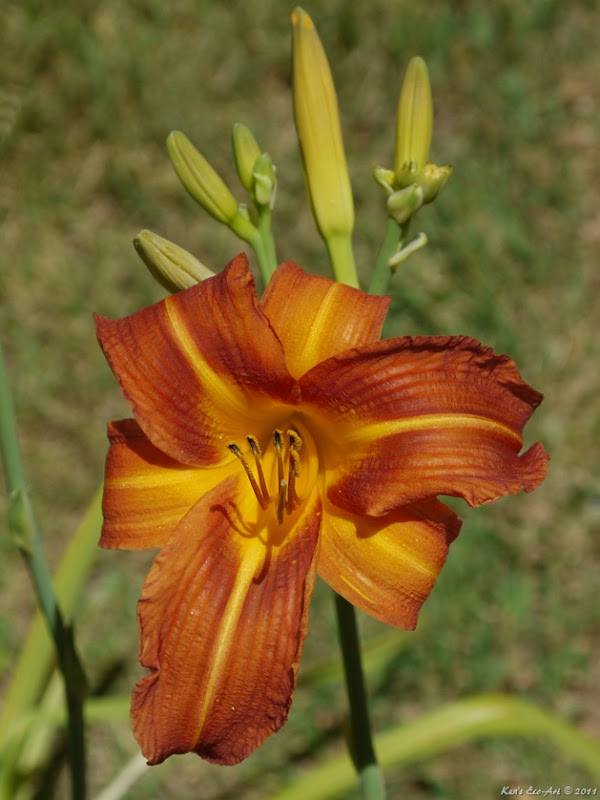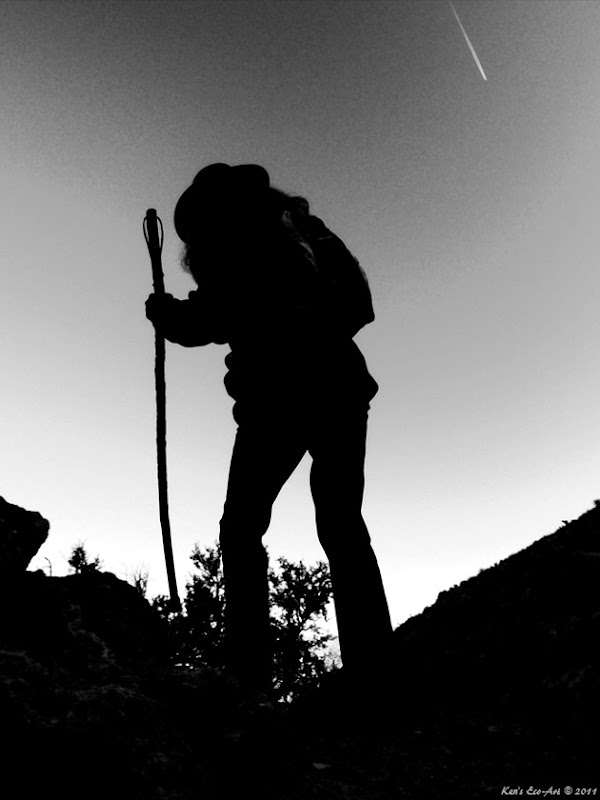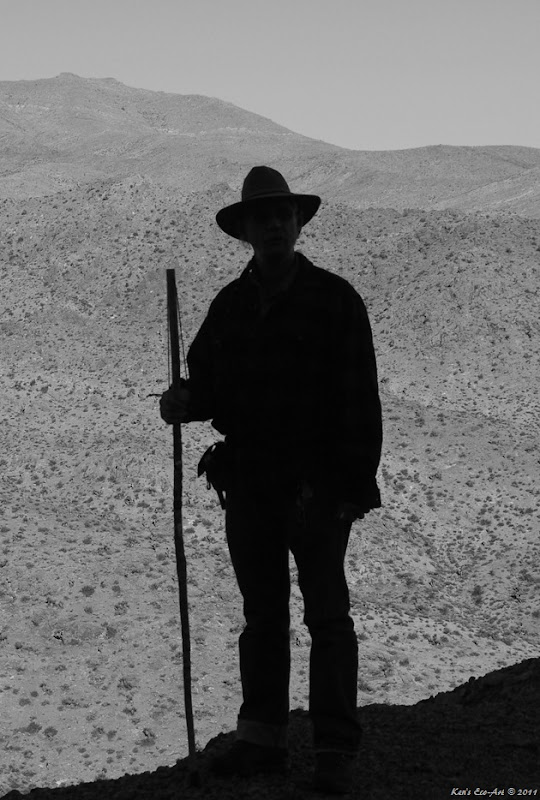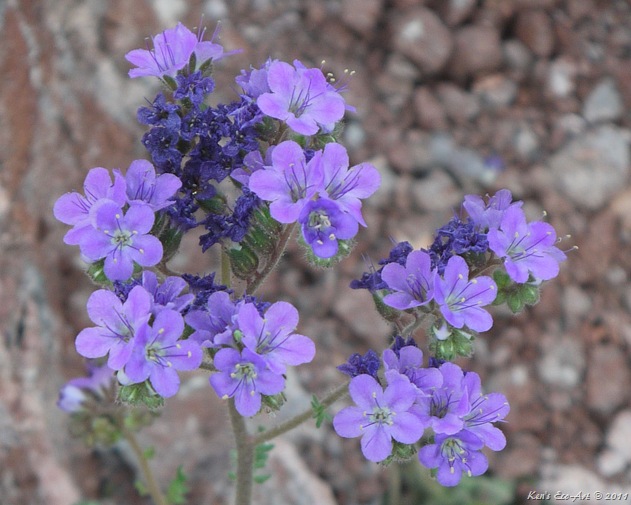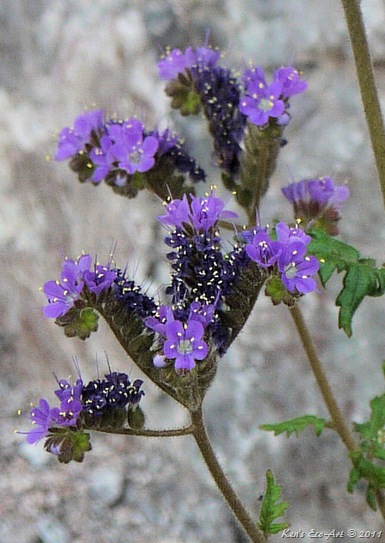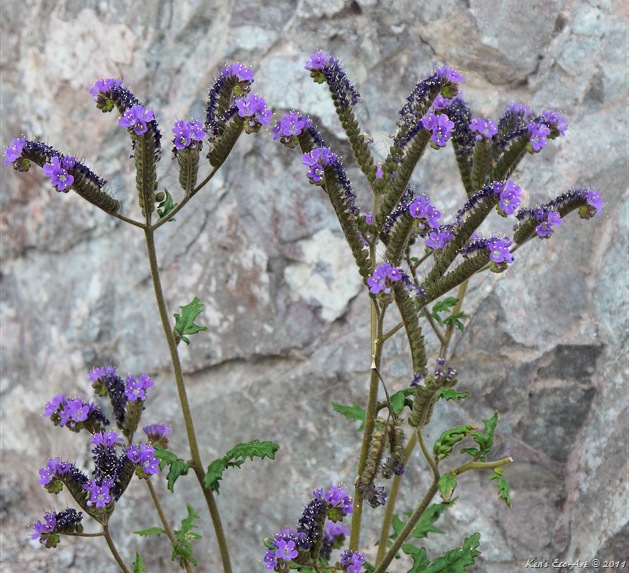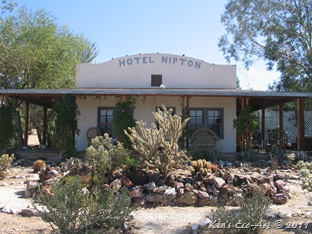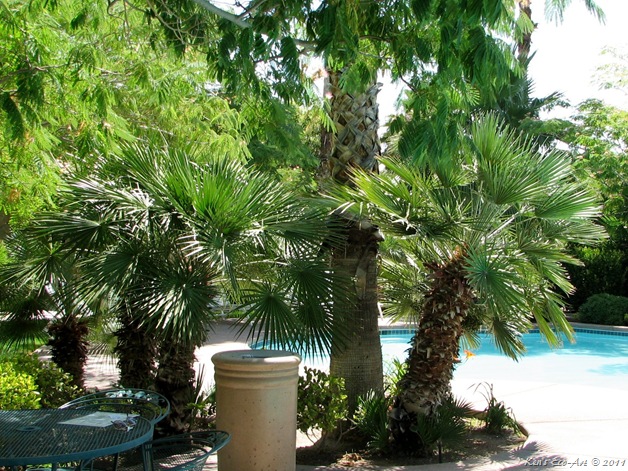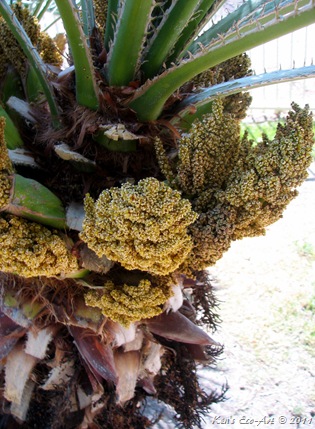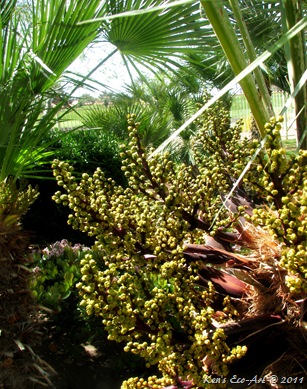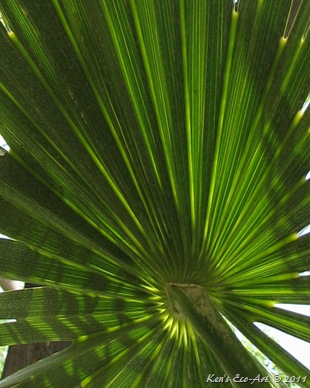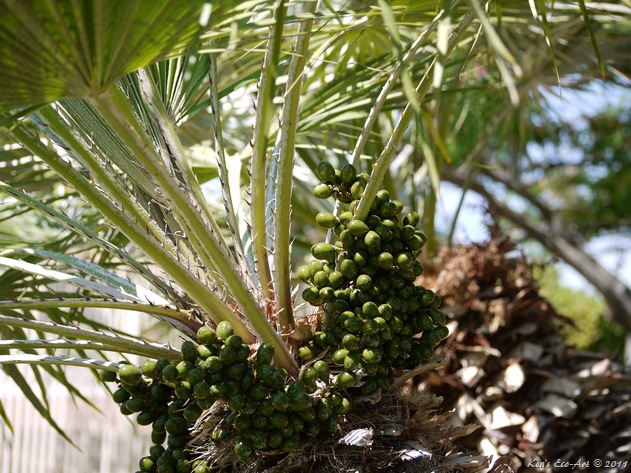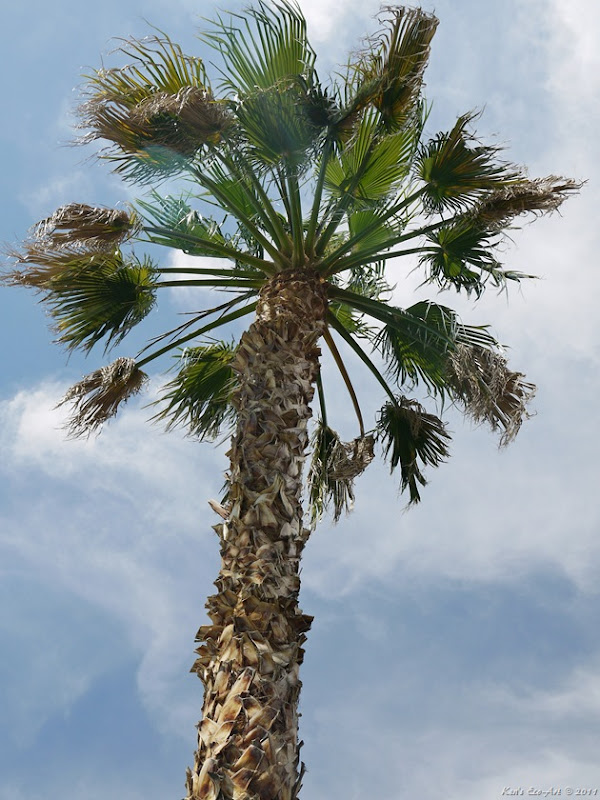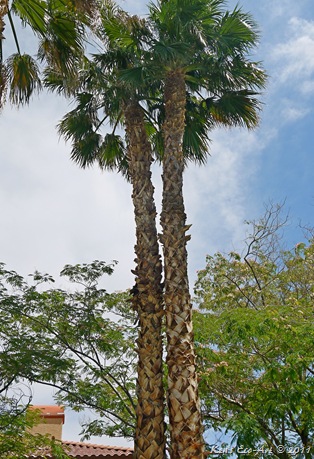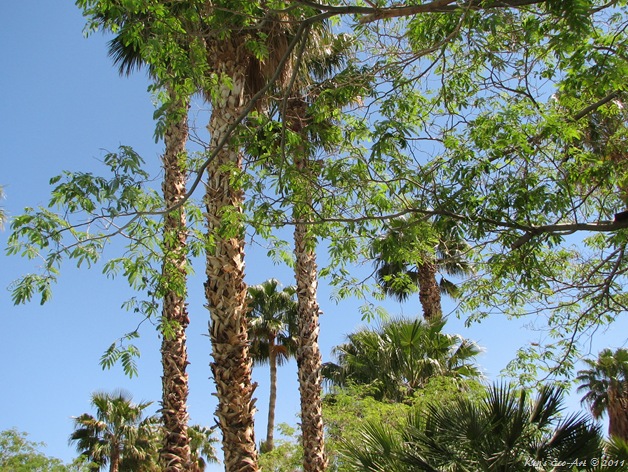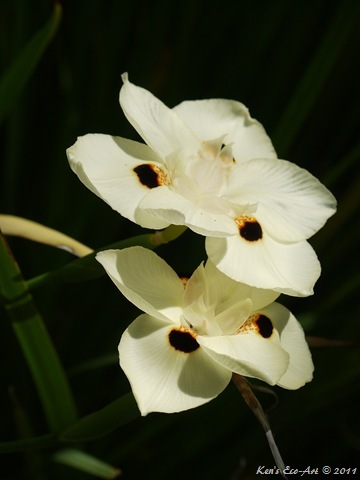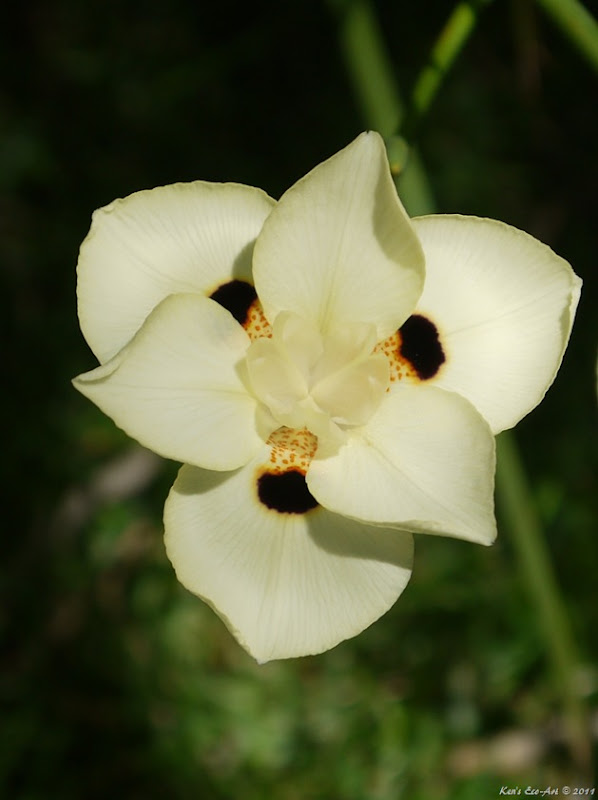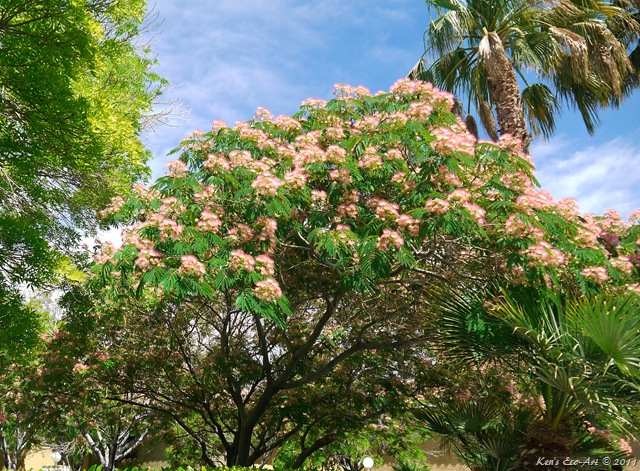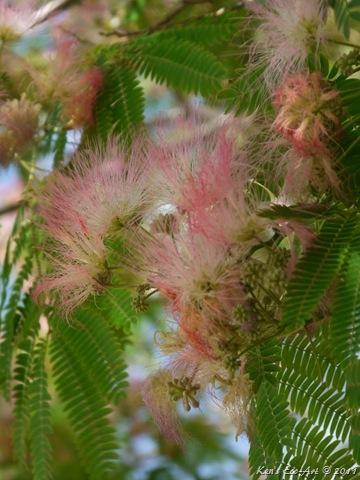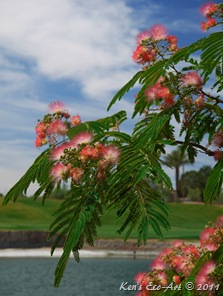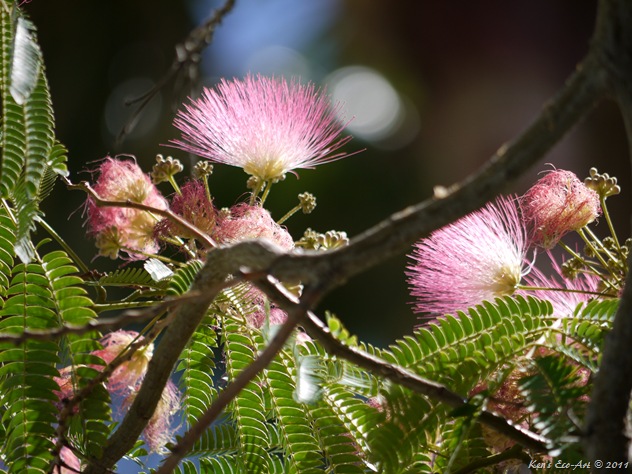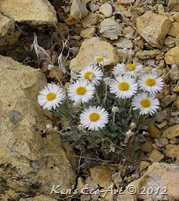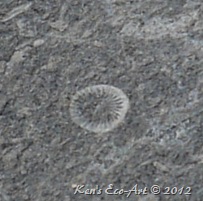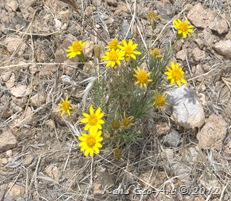{Click on an image to enlarge, then use the back button to return to this page}
This page last updated on 02/09/2019
Destination: Late Night Trailhead
Distance from Point of Origin: 21 miles.
Estimated (One Way) Travel Time: 35 minutes.
Directions: From the Stratosphere Casino, head southwest on South Las Vegas Blvd go 1.7 miles and turn right onto Spring Mountain Rd. Go .7 miles and turn left to merge onto I-15 South. Travel 5.5 miles and take exit 33 to merge onto NV-160 W/Blue Diamond Rd/SR-160 (aka Pahrump Highway) west toward Pahrump. Heading west on NV-160 go past SR-159 (West Charleston Blvd) the turn to Red Rock Canyon. The trailhead is located on the right side of NV-160, about 4.7 miles past the intersection with NV-159. This trailhead is not in the fee area.
General Description: The Late Night Trailhead is part of the extensive Cottonwood Valley Trail system located within Red Rock Canyon Recreation Lands. Though most of the trails were designed as mountain biking trails, they provide great hiking opportunities. The Late Night loop trail around the hill from the trailhead in the parking area is a relatively easy 3.5 mile hike that provides some spectacular views of the Wilson Cliffs along the west side of Cottonwood Valley. Many people argue that this place is the best reason to bring a mountain bike along to Las Vegas, or rent one once you're in town. Even though the Red Rock Canyon National Conservation Area to the north, commonly known as Red Rocks, encompasses 197,000 acres within the Mojave Desert, this southern tip in the Cottonwood Valley of the "Recreation Lands", outside the fee area, is the only place that allows mountain biking.
Special Attraction or Points of Interest: The biking trails here are the best in Los Vegas. There are over 125 miles of interconnecting single-track and an 11 mile NORBA race loop here. Portions of these trails are thought to have been created by the many wild burros in the area. The Wilson Cliff's, located immediately to the west of the trail system, offer amazing views.
Primary Activity: Biking
Secondary Activities: Hiking/Photographing.
Elevation: 3,965 Feet
Best Time To Visit: Available for visitation and hiking year round, the best time to make this hike would be in the cooler months of Fall, Winter and Spring.
Difficulty: Easy.
Facilities: None.
Estimated Round-trip Time: 2-3 hours depending upon how much hiking and picture taking you do. |
| More Info On the Late Night Trailhead: http://www.birdandhike.com/Hike/Red_Rocks/Trailheads/LateNite/_LateNte.htm |
 |
| (Fig. 01) |
|
09/27/2012 Trip Notes: After a failed attempt to visit Lovell Canyon, due to road construction, we decided to hike the Spanish Trail and Late Night Trailhead in Cottonwood Valley. Having hiked here several times in the past, several of us headed west, picking out one of the canyons in the Wilson Cliffs as a destination point while others in the group did some hiking and rock-hounding along the Old Spanish Trail. For a detailed map and more information on the hikes in Cottonwood Valley and along the Wilson Cliffs, go to my page Daytrip - Wilson Cliffs & Cottonwood Valley.Unfortunately, the many ‘cross-washes’ in the desert terrain became too much for us and the allotted time we had been given, and we had to head back before reaching our goal. The hike however, was very enjoyable and provided us with some nice color and great views, as evidenced by the photos in (Fig. 01 & 14), as well as the opportunity to see a variety of desert flora and wildlife.
|
Below (Figs. 02 thru 07), give you an idea of some of the desert flora and color that we experienced today. I believe (Fig. 02) is a species of the Desert Monkey Flower. The bush in the middle (Fig. 03) is Desert Lavender. I think (Fig. 04) is a patch of Goldfields. (Fig. 05) is Globe Mallow. The yellow weed in (Fig. 06), that appears to be everywhere this year, is a Manybristle Chinchweed (Pectis papposa). The rock in (Fig. 07) appears to be Yolk Lichens (Acarospora spp.).
|
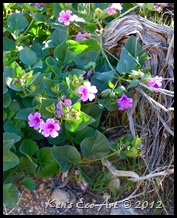 |
| (Fig. 02) |
|
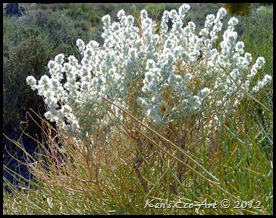 |
| (Fig. 03) |
|
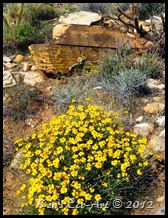 |
| (Fig. 04 |
|
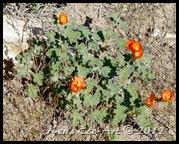 |
| (Fig. 05) |
|
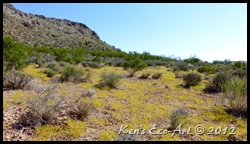 |
| (Fig. 06) |
|
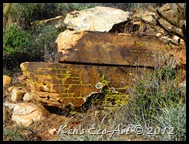 |
| (Fig. 07) |
|
| Now for some of the other desert life that we encountered. (Fig. 08) shows one of the dozens of White-lined Sphinx Moth caterpillars that we encountered throughout today’s hiking. The middle picture (Fig. 09) is just one of the beautiful butterflies that, though they appeared to be just everywhere, very seldom landed on anything. I’m still trying to identify the spider in (Fig. 10). If you look carefully, you will find a grasshopper sitting on one of the Globe Mallow cups (Fig. 11). The monster in (Fig. 12) appears to be a Great Basin Fence Lizard. In the center of the final picture (Fig. 14), the "V" between the two mountains right above my fellow hiking partner Tom, is the location of the canyon that we attempted to hike to. Maybe another day! |
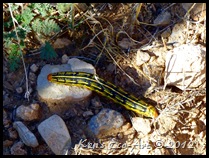 |
| (Fig. 08) |
|
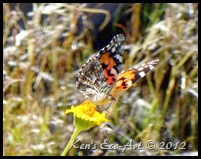 |
| (Fig. 09) |
|
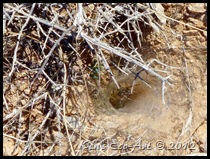 |
| (Fig. 10) |
|
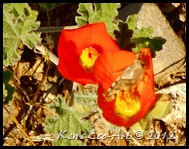 |
| (Fig. 11) |
|
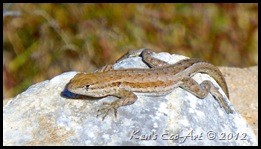 |
| (Fig. 12) |
|
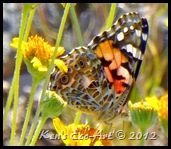 |
| (Fig. 13) |
|
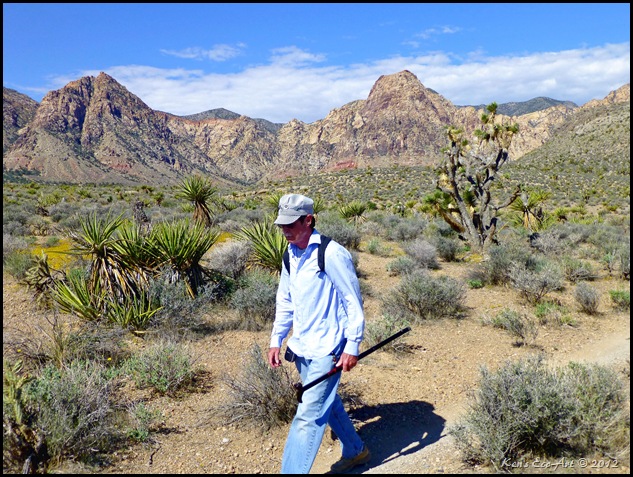 |
| (Fig. 14) |
|
05/03/2012 Trip Notes: After a failed attempt to reach Black Velvet canyon at the base of the cliffs, we spent the rest of the time hiking the hills surrounded by the Late Night Trail. John and I hiked back from partway across Cottonwood Valley, then up and over the three ridges back to the trailhead at the parking area. The rest of the group hiked the ridge from the parking area and the trails that circled the ridge.
| The next four views were shot from the ridgeline, high above the trailhead and parking area. The first shot is looking south towards the trailhead and parking area – that’s out van parked at the left side of the parking lot. The second view is looking towards the a southwest view of Cottonwood Valley and the Old Spanish Trail that we hike earlier in the morning with the Mt. Potosi Range in the background. The third picture is a view looking west towards the Wilson Cliffs. The fourth and final picture in this grouping is looking North, back out over portion of the Cottonwood Valley that John and I hiked, with the Bonnie Springs Ranch (middle left) and the Red Rock Conservation Area in the far background. |
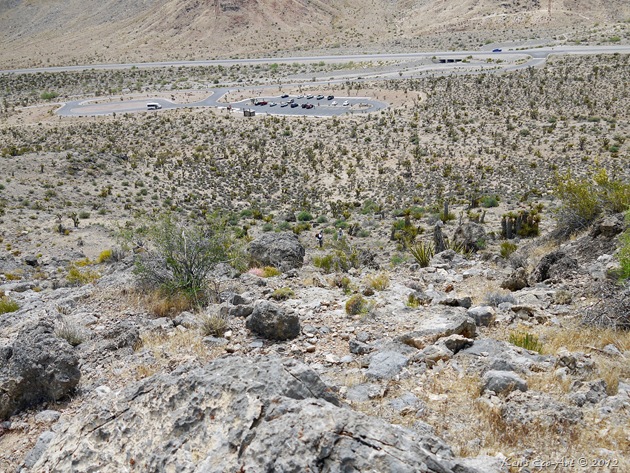 |
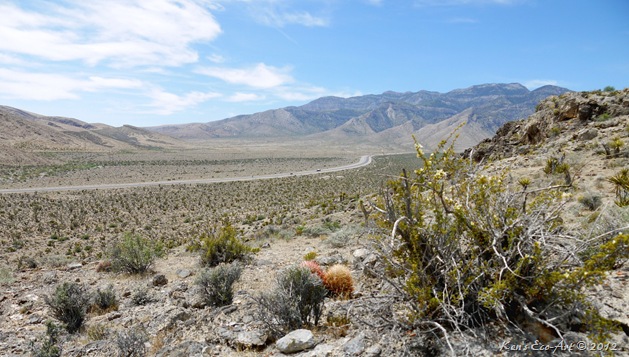 |
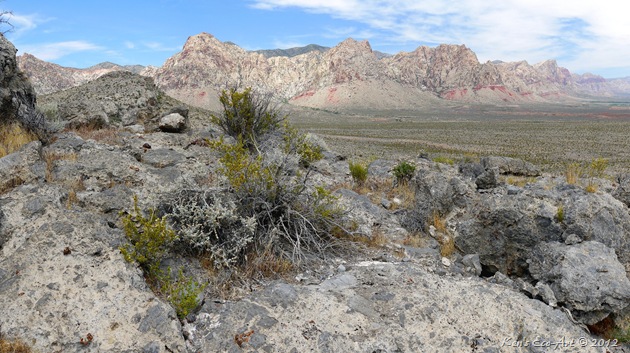 |
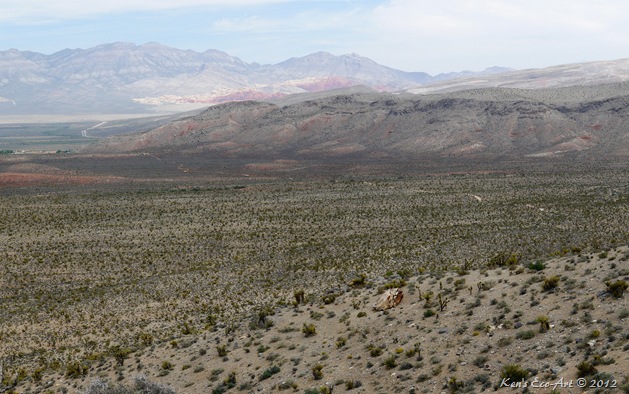 |
|
Here are a couple of pictures that we took as we hiked across the valley in the above picture. Note what appears to be a fossilized shell embedded in the rock in the middle picture. The last shot is a picture of John resting after we reached the summit. |
|
|
 |

04/12/2012 Trip Notes: Because there was no scheduled hike with the rock-hounds today, and because it was a beautiful sunny day, I decided to drive over and capture a few pictures. On today's visit I hiked about 1-1/2 miles straight out into the valley towards the base of the cliffs. Except for the outstanding views, the one disappointing thing was that, minus the occasional desert sunflower, there were no wildflowers or blooms of any kind.
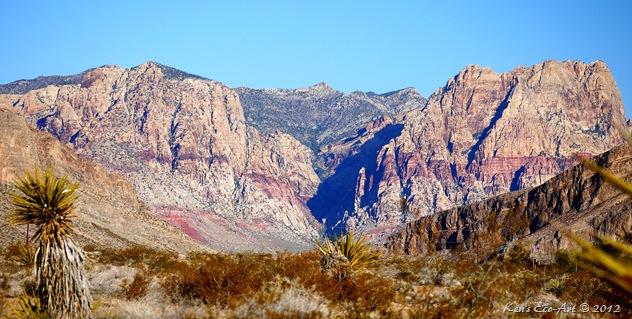 |
|
|
This trail, smack-dab in the middle of Cottonwood Valley is at the southern tip of the Red Rock Canyon Recreation Lands, a 316,819 acre area that provides spectacular views of the Wilson Cliffs or Keystone Thrust. The cliffs are located at the southern end of the eastern ridge line of the Spring Mountains, sometimes referred to as the Redstone Bluffs, and include Mt. Wilson, Rainbow Mountain and Bridge Mountain. The shot above was taken from the beginning of Blue Diamond road, just a few miles before you get to the Late Night Trailhead turnoff, and shows Mt. Wilson on the right at 7,071 feet, the second highest peak in the 195,819 acre Red Rock Canyon National Conservation Area, a designated area located within the (RRCRL). (Click map to enlarge)
|
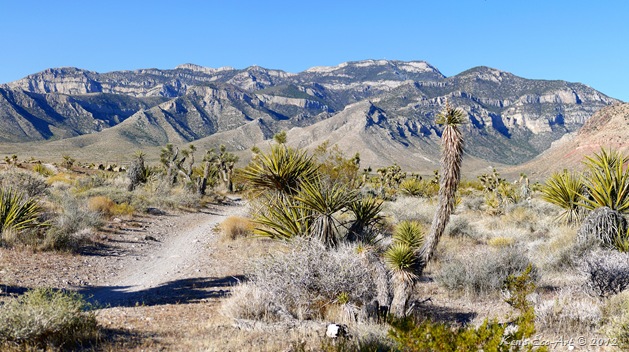 |
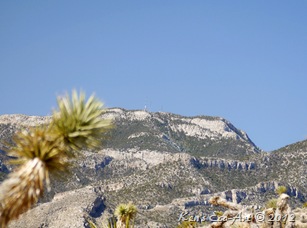 Just a few hundred yards out from the east bound trailhead, a look back provides a beautiful view southwest towards Potosi Mountain or Mt. Potosi as it’s more often called. At 8,514 feet this is one of the higher mountains in the Spring Mountain range. As you can see, the topography is quite complex as it is surrounded by high limestone cliffs on three sides. Most known as the site of the 1942 plane crash into the northeast side of the mountain that killed Carol Lombard, there are a number large caves and mines, including the famous Potosi Mine – a producer of silver, lead and zinc, it has been estimated that this mine grossed close to 4.5 million dollars over the years. As can be seen in the picture on the right, today its peak is covered with several radio and TV broadcast towers (click picture to enlarge). Just a few hundred yards out from the east bound trailhead, a look back provides a beautiful view southwest towards Potosi Mountain or Mt. Potosi as it’s more often called. At 8,514 feet this is one of the higher mountains in the Spring Mountain range. As you can see, the topography is quite complex as it is surrounded by high limestone cliffs on three sides. Most known as the site of the 1942 plane crash into the northeast side of the mountain that killed Carol Lombard, there are a number large caves and mines, including the famous Potosi Mine – a producer of silver, lead and zinc, it has been estimated that this mine grossed close to 4.5 million dollars over the years. As can be seen in the picture on the right, today its peak is covered with several radio and TV broadcast towers (click picture to enlarge). |
|
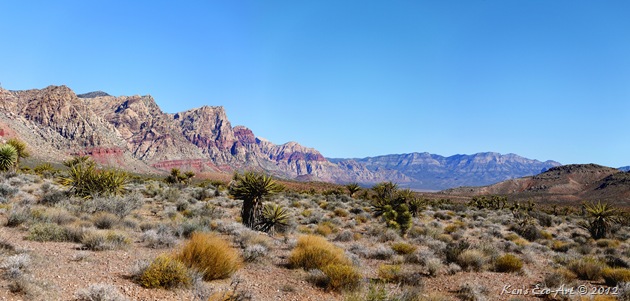 |
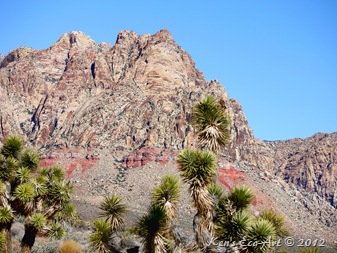
After taking the southern route from the parking area and rounding a rather barren hillside, one is immediately confronted with one of the most colorful and beautiful vistas available anywhere within the Red Rock Canyon National Conservation Area. Roughly a 1-1/2 to 2 mile hike through the valley shown in the top picture will take you to the base of the cliffs, Mt. Wilson, Oak Creek and Juniper Canyon. |
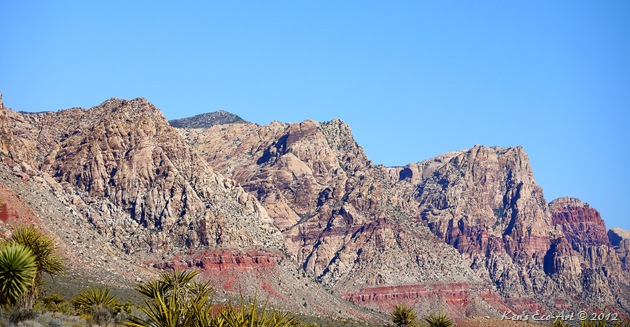 |
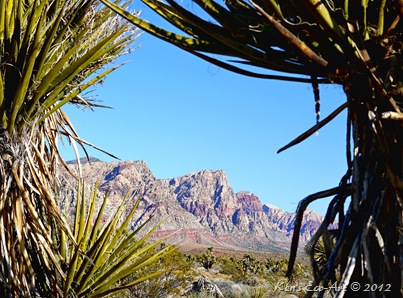 | 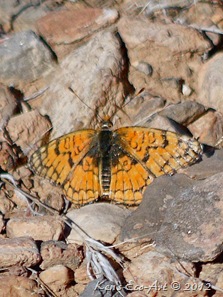 |

04/21/2011Trip Notes: On today's visit I hiked about 1/2 of the 3-1/2 mile loop trail as part of a daytrip with the rock hounds from the Heritage Park Senior Facility.
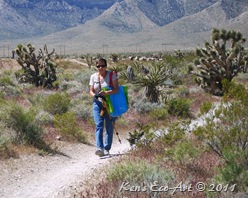
From the parking area we headed east around the hill. Within minutes we were confronted with these two spectacular views. | 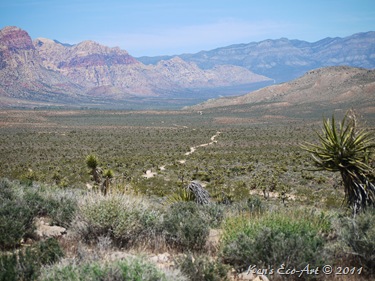 |
Once again we were witness to nature’s beauty with a variety of wildflowers, butterflies and cactus. One thing I can say for sure, all of the mountain bikers that passed us were all going much too fast to see these glimpses of beauty.
|
(OPTION 1) Each show is designed to run automatically in place, without leaving the current browser window. If the show is not already running, just click the large "Play" button in the middle of the picture and let it run.
(OPTION 2) Running the cursor over the picture being shown will PAUSE the show and bring up a navigation bar at the bottom of the slideshow window with Pause, Forward and Back buttons, allowing you to start, stop or manually forward or back up pictures one at a time.
|
|
Slideshow Description:
The slideshow above contains 61 pictures that were taken in and around the Cottonwood Valley and along the Late Night Trail during my last five visits here.
|
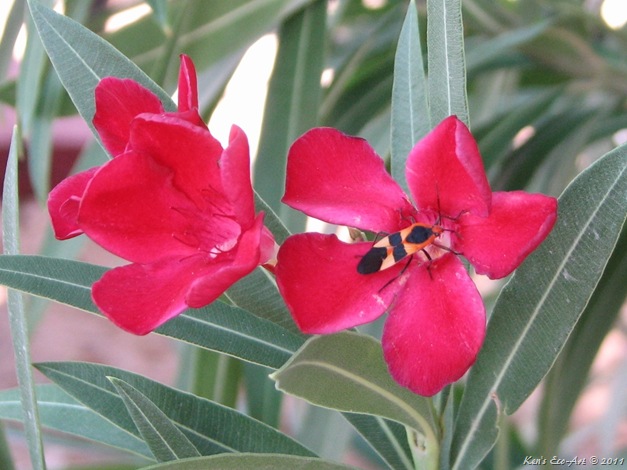
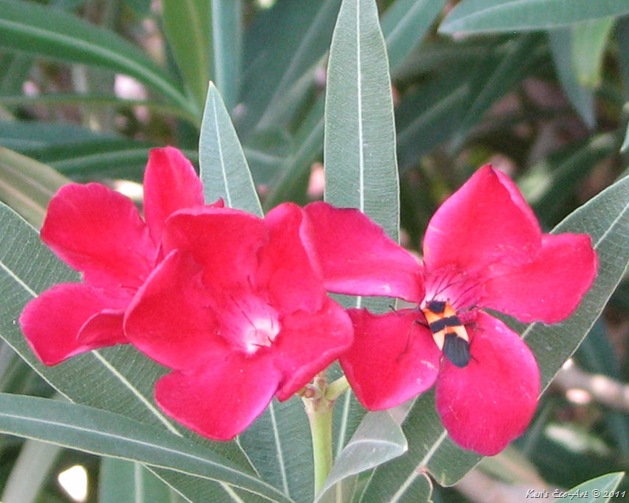
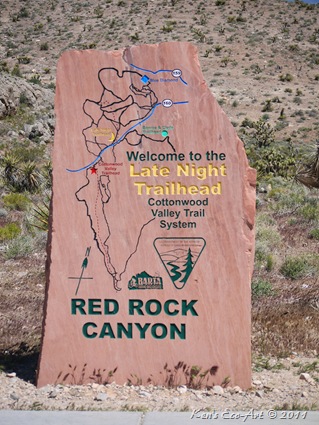
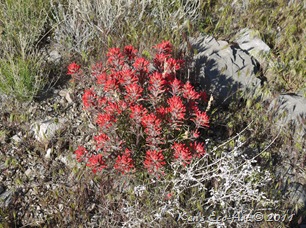
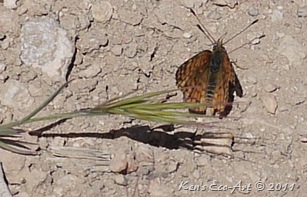







 Just a few hundred yards out from the east bound trailhead, a look back provides a beautiful view southwest towards Potosi Mountain or Mt. Potosi as it’s more often called. At 8,514 feet this is one of the higher mountains in the Spring Mountain range. As you can see, the topography is quite complex as it is surrounded by high limestone cliffs on three sides. Most known as the site of the 1942 plane crash into the northeast side of the mountain that killed Carol Lombard, there are a number large caves and mines, including the famous Potosi Mine – a producer of silver, lead and zinc, it has been estimated that this mine grossed close to 4.5 million dollars over the years. As can be seen in the picture on the right, today its peak is covered with several radio and TV broadcast towers (click picture to enlarge).
Just a few hundred yards out from the east bound trailhead, a look back provides a beautiful view southwest towards Potosi Mountain or Mt. Potosi as it’s more often called. At 8,514 feet this is one of the higher mountains in the Spring Mountain range. As you can see, the topography is quite complex as it is surrounded by high limestone cliffs on three sides. Most known as the site of the 1942 plane crash into the northeast side of the mountain that killed Carol Lombard, there are a number large caves and mines, including the famous Potosi Mine – a producer of silver, lead and zinc, it has been estimated that this mine grossed close to 4.5 million dollars over the years. As can be seen in the picture on the right, today its peak is covered with several radio and TV broadcast towers (click picture to enlarge).







